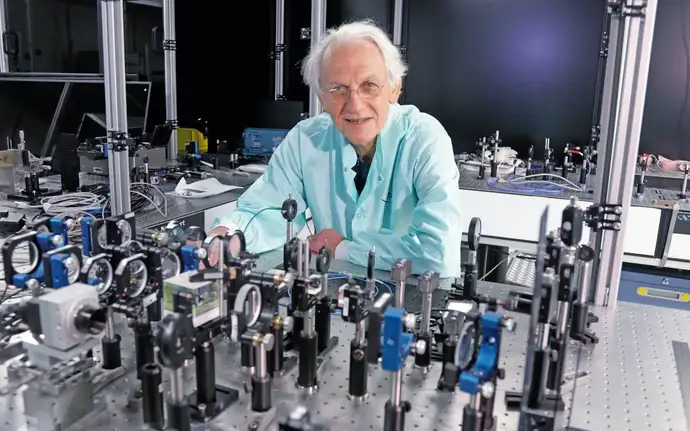Laser glasses to support scientific progress
A breakthrough in laser technology
How is it possible to generate highly intense, ultrashort laser pulses with extremely high energy? For many years laser physicists worked on this intensively. However, a breakthrough was officially recognized by the awarding of the 2018 Nobel Prize in Physics. The two winners, Gérard Mourou and Canadian Donna Strickland – the third female ever to receive this award – jointly invented a sophisticated method of increasing the power of lasers. They were successful in turning them into powerful precision tools for everything from eye surgery to micro-machining.

The world's most intense laser pulse
The technique to create the most intense laser pulses ever is called "Chirped Pulse Amplification” (CPA), and was developed by both scientists back in 1985 as part of Strickland’s doctoral work. CPA enables the creation of ultrashort laser pulses of a few femtoseconds (1fs = 10-15 s) and with very high power in the Petawatt range (1PW=1015 W). The principle is to temporarily spread an incredibly ultrashort pulse with an optical grating to decrease its immediate intensity before amplifying it again. The pulse is then recompressed and reaches intensities greater than all the power stations in the world.
Laser glasses from SCHOTT play an important role as an amplifier material in high power lasers.
SCHOTT's central role in laser development
The former vision of the two researchers has become reality. The CPA technology they invented has already been applied in one of the most advanced laser systems – the European ELI (Extreme Light Infrastructure), the world's first multi-site (Hungary, Romania and in Czech Republic), large scale scientific laser facility, initiated by Professor Mourou.
Here, as well as in other demanding laser systems all around the world – e.g. Apollon, NIF and Laser MejaJoule – active phosphate and silicate-based laser glasses from SCHOTT are enablers and key components in the respective beam-through systems. They provide the exceptional optical properties able to amplify stretched pulses to an extreme degree.
“We are proud to be involved for decades into such a technology. We can also thank our international ventures on large-scale laser projects for providing the necessary drive to continue developing our laser glasses,” explains Alain Danielou, Strategic Market Manager for Laser Components EMEA at SCHOTT Advanced Optics. As an amplifier in those ultra-high peak power applications, the glasses now provide the rarely requested larger bandwidth of 30 to 50 nanometers.
Danielou: “Because of the fundamental Uncertainty Relation ultra-short pulses have a broad spectrum which must be preserved during amplification in order to make subsequent compression possible. That´s why we are still faced with the challenge of enlarging the bandwidth of the pumping inside our phosphate glasses to 80 nanometers”.
Laser glasses will face a lot more in the near future. Many older laser facilities will soon need to be refurbished – and SCHOTT is already ready to deliver the glass slabs for the laser designs and wavelengths for the renewed high power lasers.
December 10th, 2018
Link
